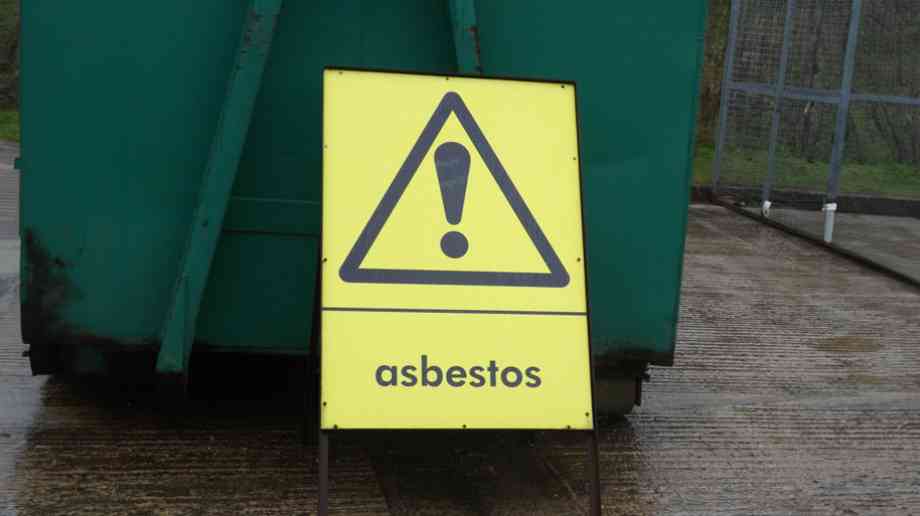Faced with increasing pressure to do more with less, all kinds of organisations are looking at ways to work smarter and local government is no exception.

Asbestos management in government buildings
In the UK, asbestos remains a legacy issue in many public buildings, posing significant health and safety concerns. Craig Evans, chief operating officer of UKATA, presents a comprehensive guide on the removal, surveying, and consultation processes essential for asbestos management.
Understanding asbestos: historical use and present risks
Asbestos was extensively used in the UK’s building industry for many years until its complete ban in 1999. Buildings built before this time have a high chance of containing asbestos containing materials (ACMs). Given its fire-resistant, insulating properties and strength to many building products, asbestos found its way into numerous building materials from flooring materials to roofing materials and many other products in between, such as wall panels, ceiling tiles, coatings, and composite products. However, the revelation of its carcinogenic nature led to a re-evaluation of its use. Asbestos exposure can lead to severe health issues like mesothelioma, lung cancer, and asbestosis, making its management a public health priority. The main individuals at risk previously were the traditional asbestos injuries manufacturing and installing, however over the past 25 years, the focus has changed to the construction and maintenance trades who may inadvertently come across asbestos during their day-to-day work, this focus continues to evolve to include employees and also partners of those exposed to asbestos.
The importance of asbestos surveys in public buildings
Asbestos surveys are the foundation in managing the risks associated with ACMs in government facilities. These surveys provide crucial data on the location, condition, and type of asbestos present, guiding subsequent removal or management decisions. They are particularly vital in older buildings, where the likelihood of asbestos use is higher, however any building constructed before the year 2000 may have some ACMs. UKATA advocates for regular and thorough surveys, including a regular re-inspection programme, especially before any refurbishment or demolition activities, to avoid inadvertent asbestos disturbance and the associated health risks. Within the UK there are two main surveys that buildings owners can opt for. The management survey, which is the most common to identify ACMs and the risk and provides data to manage the risks, and the refurbishment and demolition survey which needs to be undertaken prior to building refurbishment works, demolition and more intrusive maintenance activities.
Asbestos removal: procedures and challenges
Removing asbestos from public buildings is a complex and high-risk task. It demands skilled professionals who can navigate the intricacies of safe asbestos removal and disposal. For government entities, selecting the right contractor is crucial. This involves ensuring that the contractor is competent or licensed (for high-risk asbestos removal), adheres to the Health and Safety Executive (HSE) guidelines, and follows strict safety protocols. The UK has for 40 years had a permissioning regime that restricts those not proven to be competent to work on asbestos, this ensures that work carried out on ACMs is controlled and undertaken to a very safe and high standard, preventing exposure to asbestos. This process is not just about removing a hazardous material; it is also about safeguarding the health of workers and the public.
The significance of consultation and stakeholder engagement
Effective asbestos management extends beyond physical removal. It includes a comprehensive consultation process involving various stakeholders, including building users, employees, and the general public. This engagement is vital for raising awareness, addressing concerns, and ensuring transparency in how asbestos risks are managed.
Policy and regulatory framework
The UK’s Control of Asbestos Regulations 2012 provides the legal framework for managing asbestos and the risk posed from asbestos. It outlines the duties of building owners and managers, especially in non-domestic premises, to identify if their building/s contain asbestos and assess and manage subsequent asbestos risks. Local and central government bodies must align their asbestos management strategies with these regulations, ensuring compliance and setting a standard for responsible building management.
Training and education: UKATA’s role
UKATA, through its network of approved training providers, plays a pivotal role in educating and training professionals in asbestos management. UKATA courses and certifications are crucial for building a skilled workforce capable of handling asbestos-related challenges effectively. Government bodies must prioritise training for their staff, especially those involved in facilities management and health and safety, to foster a culture of awareness and compliance.
Asbestos management plans: a proactive approach
Developing and implementing an asbestos management plan is essential for any public sector entity. This plan should detail the procedures for surveying (identify), risk assessment (assess), and action plans (control) in case asbestos is found or disturbed. Regular updates and reviews of the plan are necessary to address any changes in building usage or structure.
The role of technology in asbestos management
Advancements in technology have introduced new methods to assist building managers and duty holders managing asbestos, making it quicker, easier, and more accessible to ensure communication of the risk are shared to those who potentially could be at risk. These innovations range from on-site collection of data using real-time data transfer to sophisticated data management systems and asset registers that track asbestos across multiple buildings. Government bodies should leverage these technologies to enhance their asbestos management strategies.
Public health implications and awareness campaigns
Awareness campaigns are vital in educating the public about asbestos risks. Government agencies can collaborate with organisations like UKATA to disseminate information and foster a community-wide understanding of asbestos-related hazards. This is especially important for residents in government housing and users of public facilities.
Future challenges and opportunities
As we move forward, the challenges of managing asbestos in an aging building stock will continue to evolve. The government’s commitment to net zero targets and sustainable development presents an opportunity to integrate asbestos management into broader environmental and health initiatives. This holistic approach can ensure that asbestos removal aligns with energy efficiency upgrades and sustainable building practices.
Conclusion
Asbestos management is a multifaceted challenge requiring collaboration, expertise, and a proactive stance from government bodies. By embracing comprehensive surveying, removal, and consultation processes, and adhering to regulatory frameworks, local and central government can effectively mitigate asbestos risks. This commitment not only ensures compliance but also demonstrates a dedication to safeguarding public health and the integrity of public buildings.
Event Diary
Join us for the landmark 10th Anniversary of the London Build Expo, the UK’s largest and most influential construction and design show.
Retail Supply Chain & Logistics Expo returns to Excel London across 12-13 November, once again bringing together the world of logistics, supply chain, eCommerce and retail innovation for two dynamic days of opportunity.
Every sport, from grassroots football to world-class tournaments, depends on one constant: high-quality playing surfaces and well-maintained green spaces.
Supplier Profiles
Bauder Accepts Keys to its New UK Distribution Centre at Gateway 14
Bauder marked a major milestone in its UK expansion with the official handover of a brand
Words of World: Bridging language barriers with excellence
At Words of World, we specialise in professional translation and interpreting, d
Latest Features
The British Institute of Cleaning Science (BICSc) and the Cleaning & Support Services Association (CSSA) have successfully completed a groundbreaking project aimed at exploring the future of cleaning. This collaboration marks a significant milestone in the cleaning industry, reflecting a shared commitment to embracing innovation with confidence.
The Crown Commercial Service’s (CCS) new framework on Language Services (RM6302), dealing with translation, transcription and interpreting, is live, running from 7th May 2025 to 6th May 2028.










